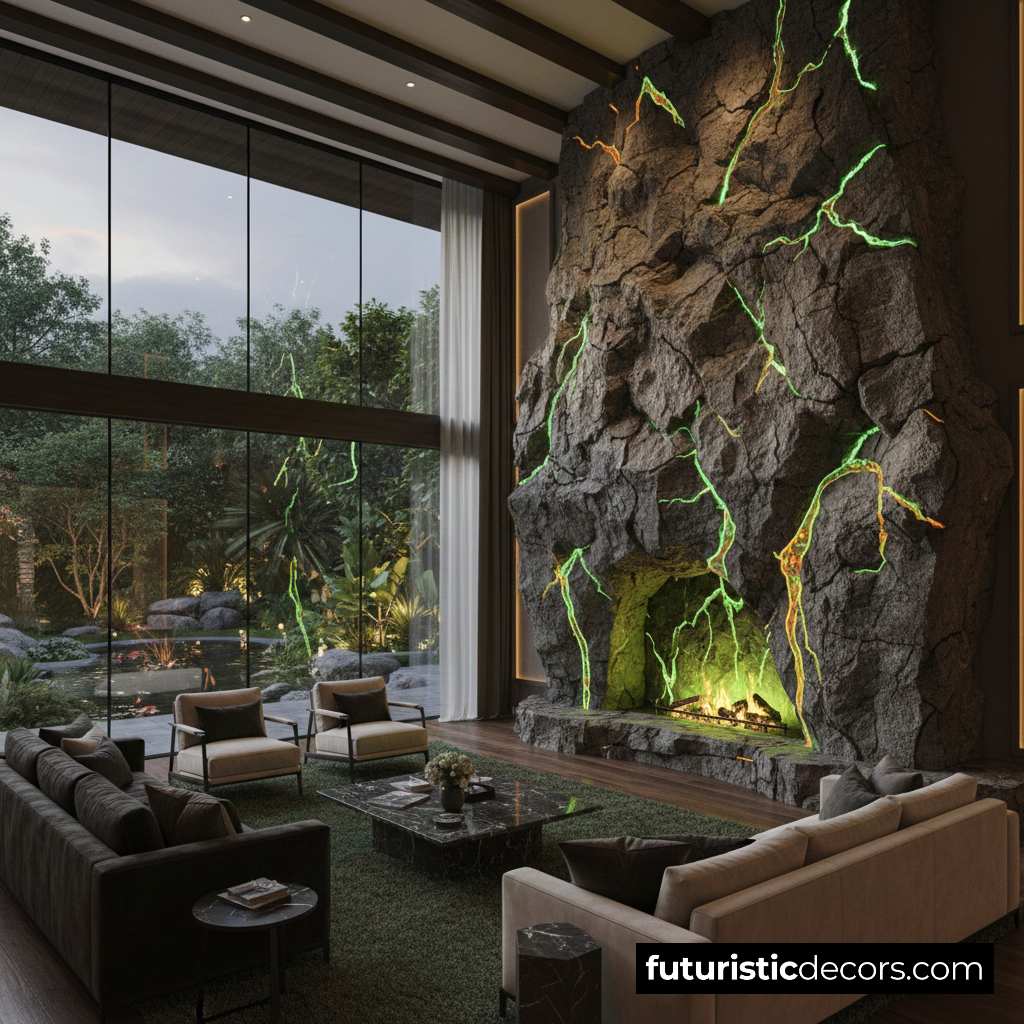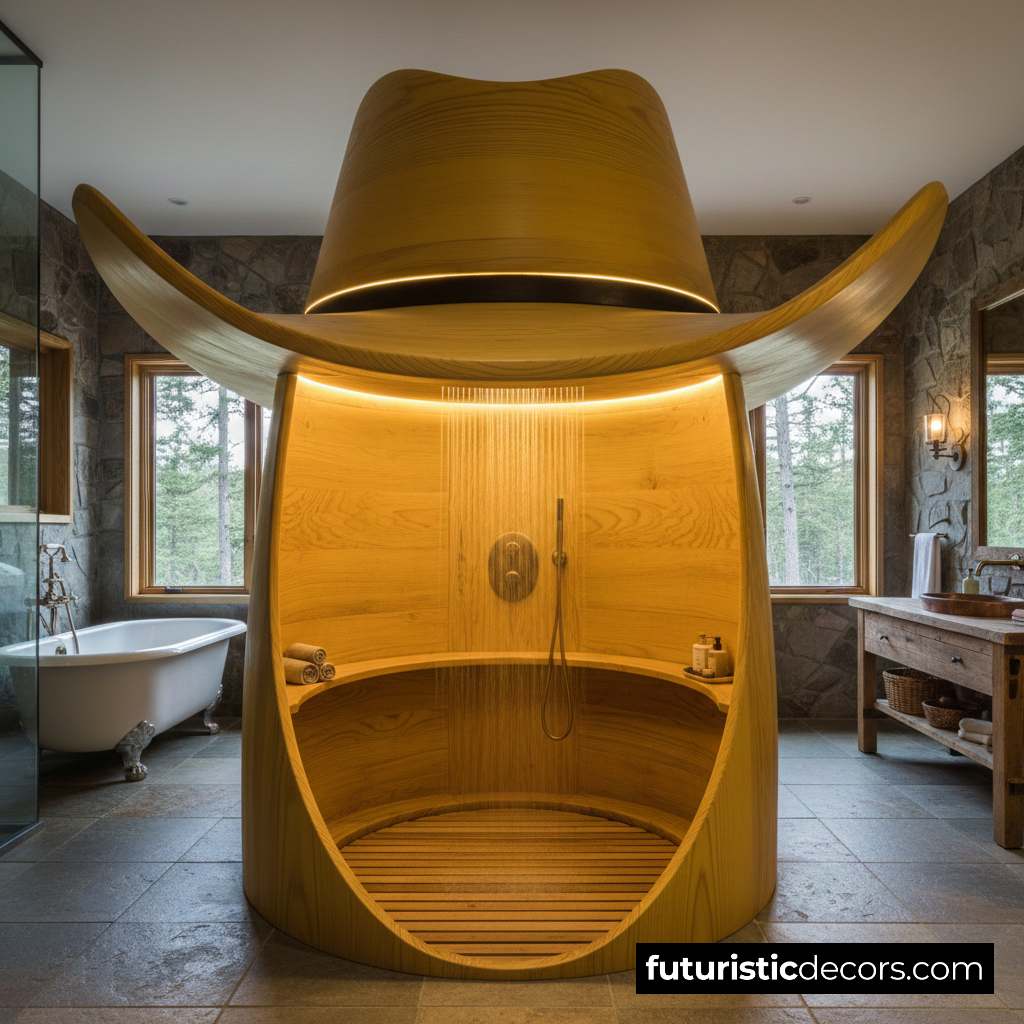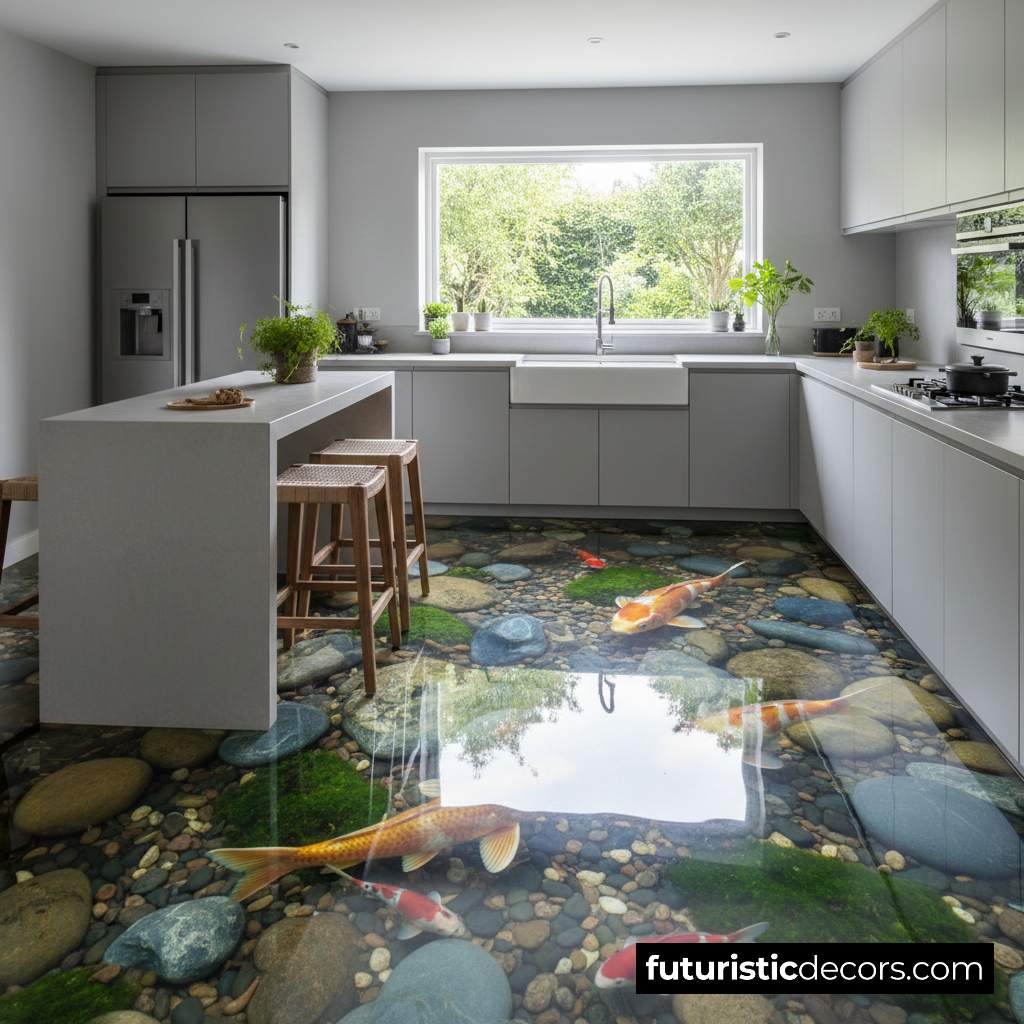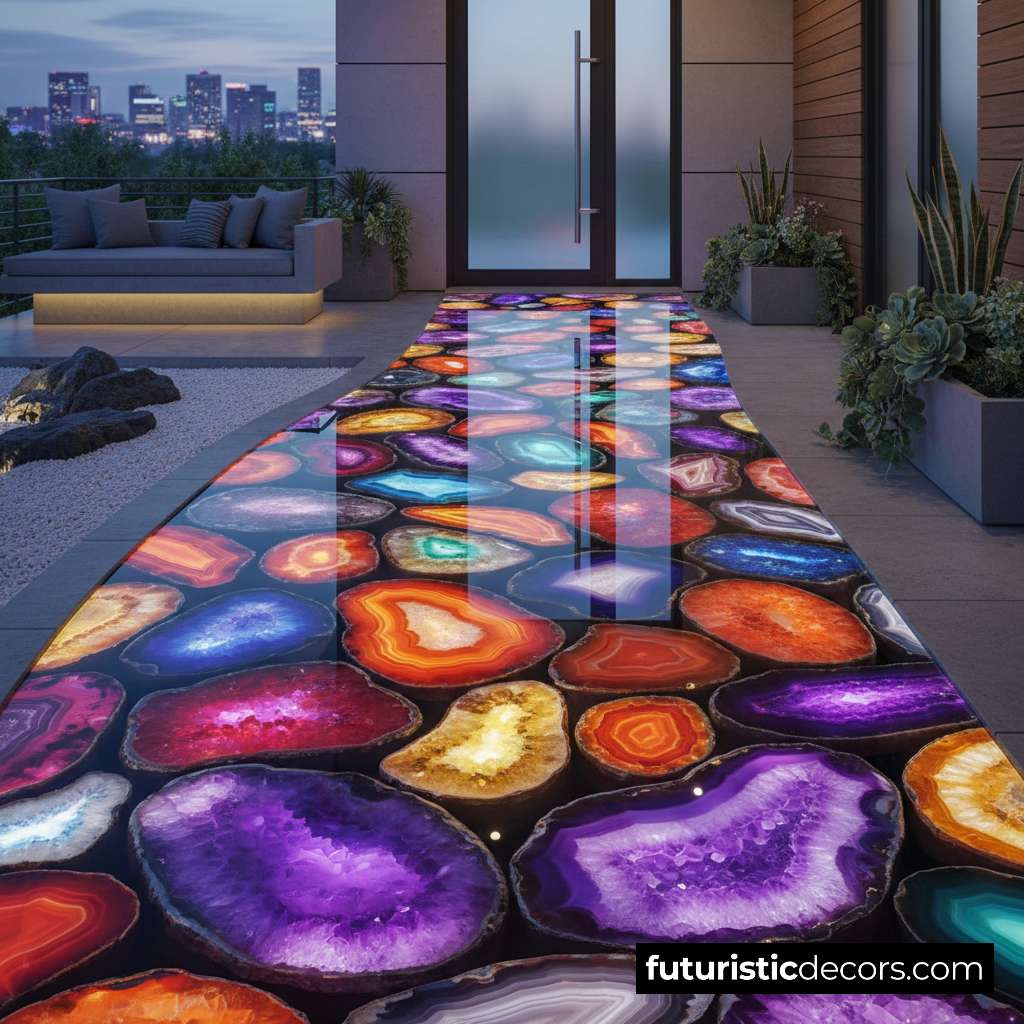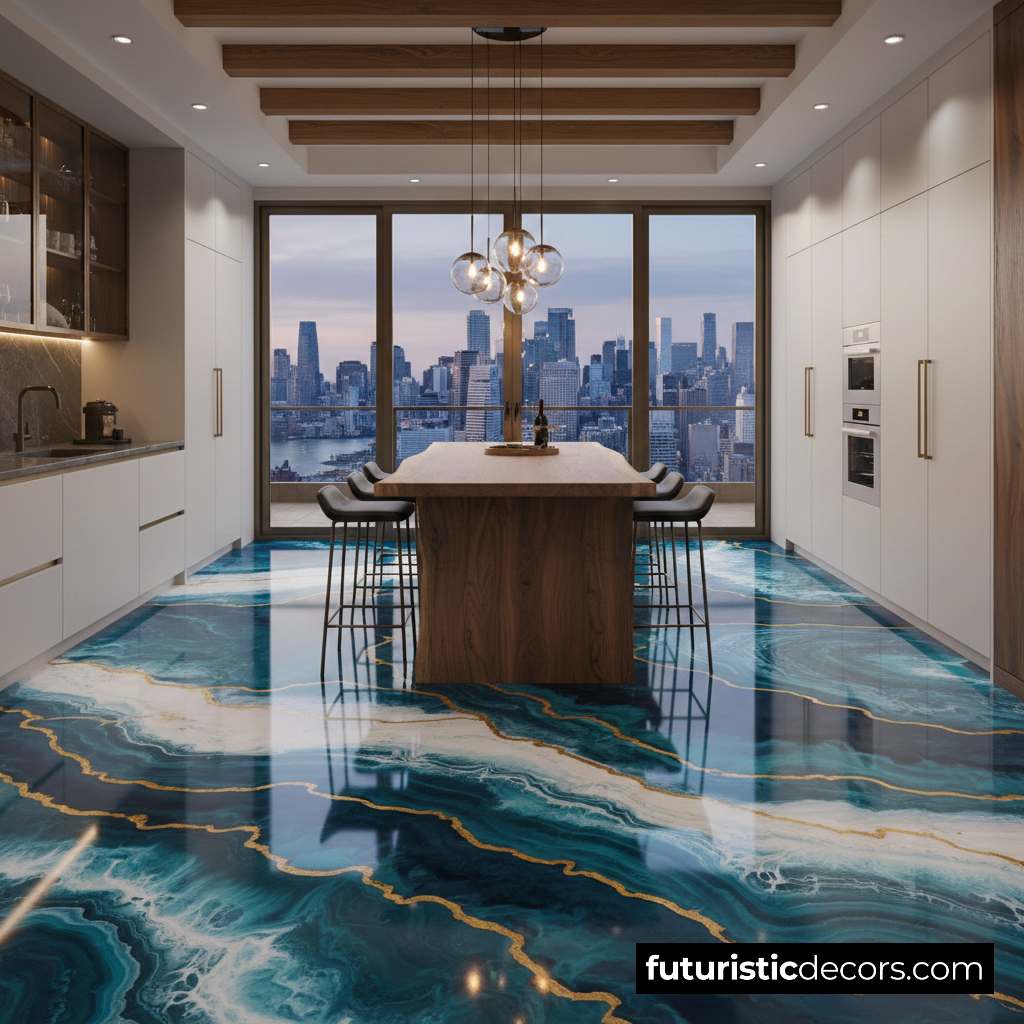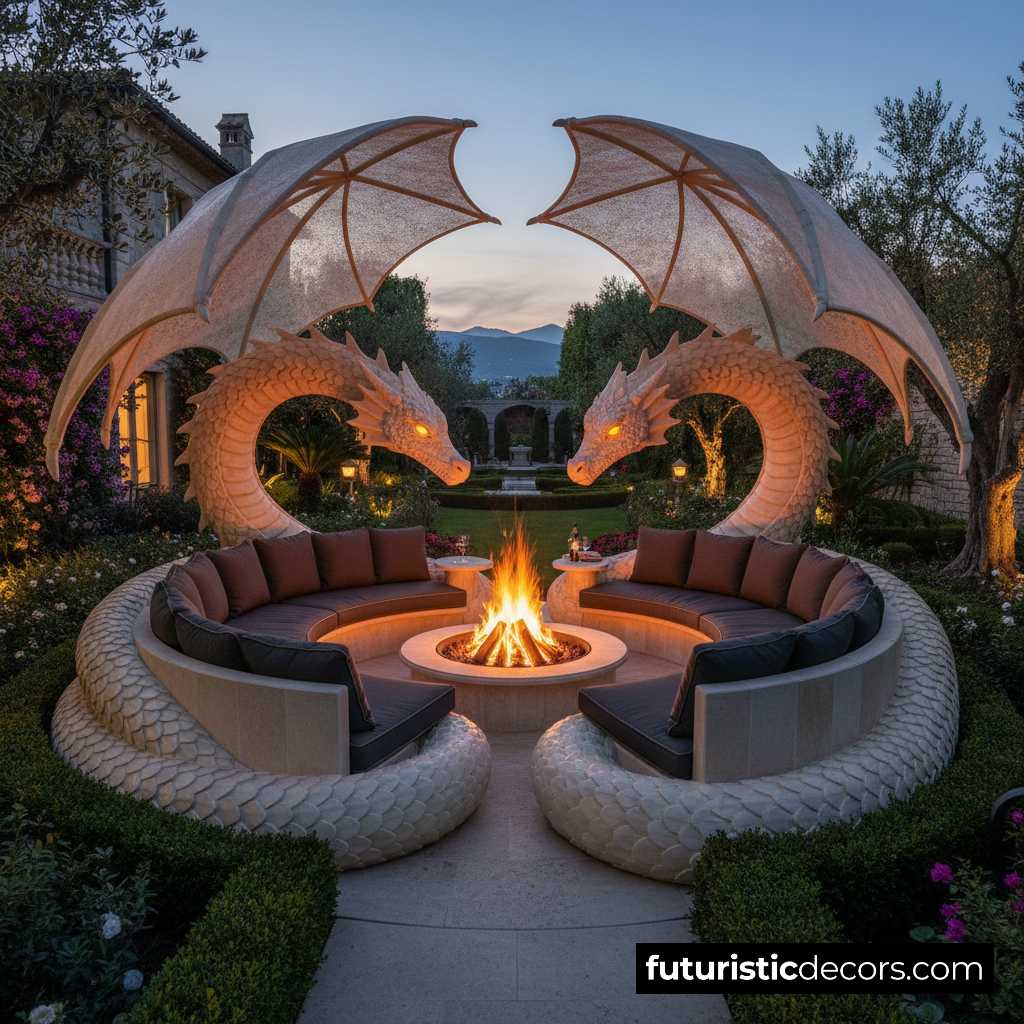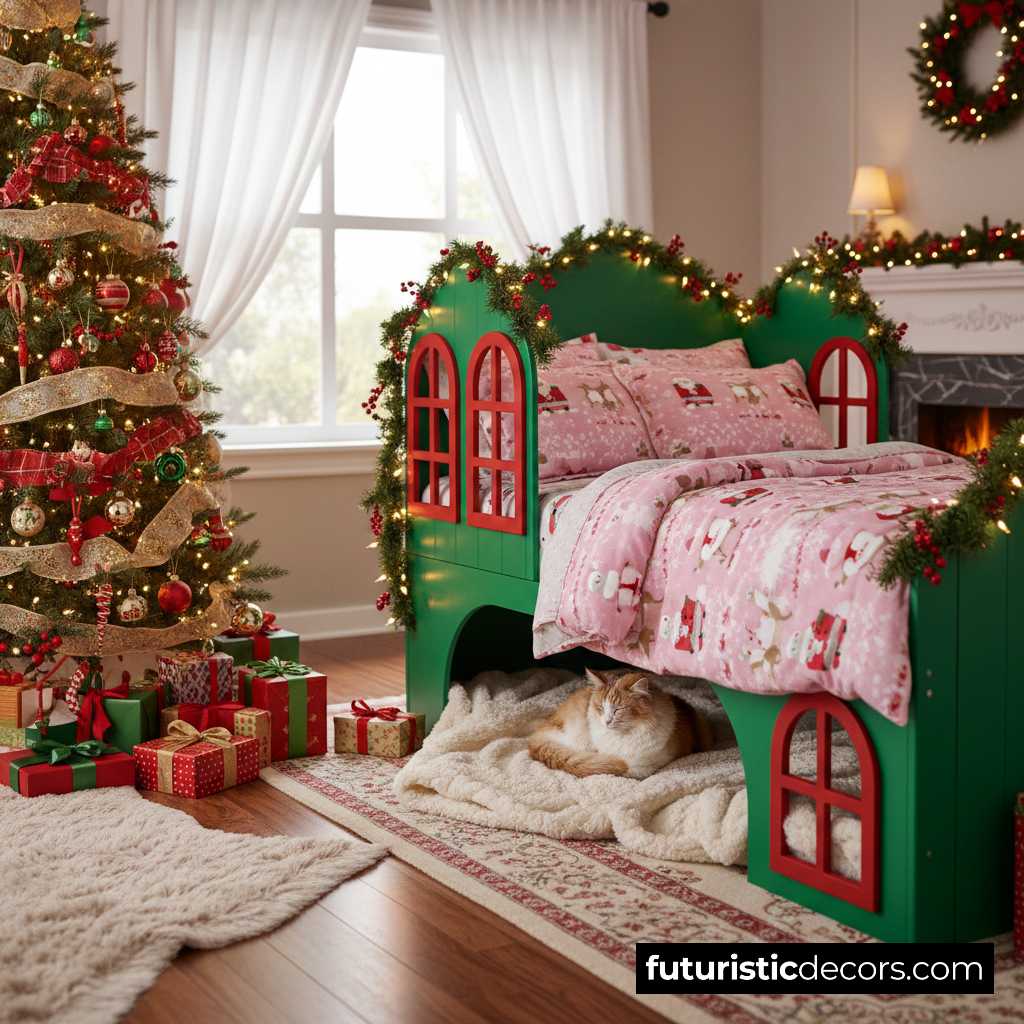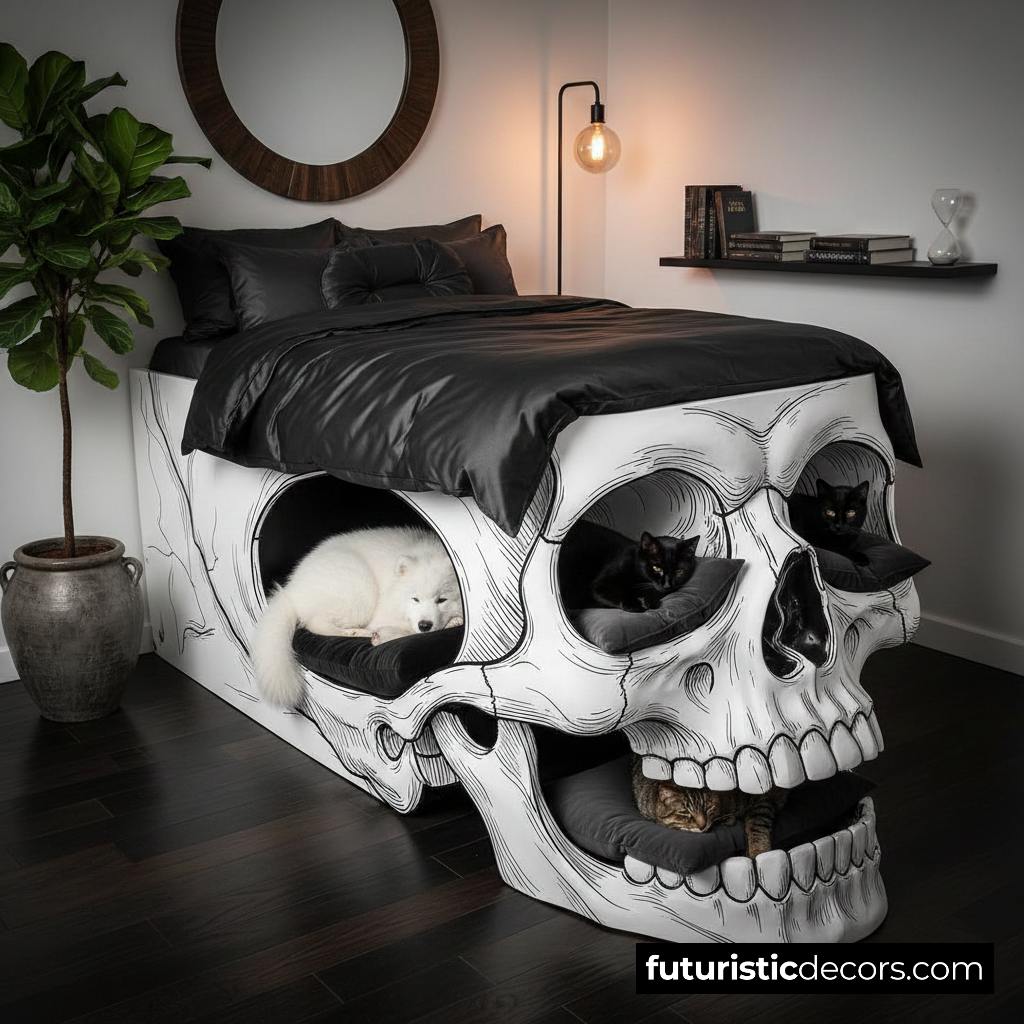Imagine entering a grand chamber bathed in prismatic light, where every beam tells a story of ancient legend. Rainbow Stained Glass Dragon Chandeliers do precisely that—marrying the vivid hues of rainbow stained glass with the timeless mystique of the dragon. These lighting fixtures are more than mere sources of illumination; they are works of art that transform any space into a realm of fantasy and refinement. In this article, we explore the origins, craftsmanship, and practical considerations of these breathtaking chandeliers, and explain why they have become the centerpiece of modern and medieval-inspired interiors alike.
From the earliest Gothic cathedrals to today’s luxury homes, stained glass has always captivated with its kaleidoscopic glow. When shaped into the form of a dragon—a creature synonymous with power, wisdom, and magic—the result is a stunning fusion of artistry and symbolism. Whether suspended above a dining table, gracing a library, or as the focal point of a grand foyer, a Rainbow Stained Glass Dragon Chandelier can instantly elevate the ambiance, infusing spaces with color, movement, and narrative depth.

This comprehensive guide delves into the art and science behind these fixtures. We’ll trace the evolution of stained glass and dragon iconography, dissect the design elements that make these chandeliers unique, and provide practical advice on placement, maintenance, and commissioning custom pieces. By the end, you’ll understand why collectors, interior designers, and connoisseurs of fantasy décor are enchanted by Rainbow Stained Glass Dragon Chandeliers—and how you can harness their transformative power in your own home.
1. The Origins of Dragons in Decorative Art
The dragon is one of humanity’s oldest mythological symbols. Across cultures—be it the benevolent Eastern dragons of China or the fire-breathing Western dragons of medieval Europe—this creature has embodied strength, protection, and the arcane. In decorative arts, dragons have adorned everything from temple roofs to tapestry weaves. They symbolize guardianship over treasures, be those physical gold or the spiritual riches of wisdom and creativity.
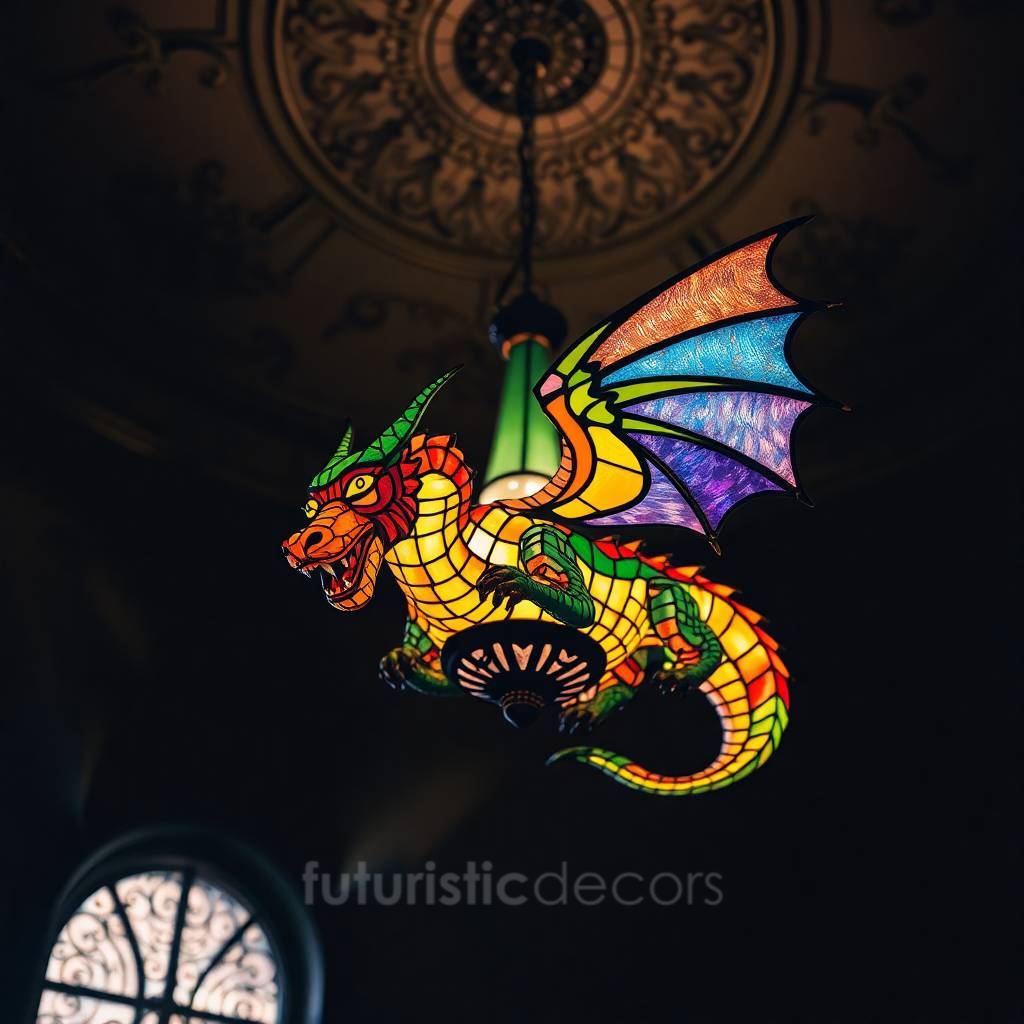
In East Asian art, dragons often appear in scroll paintings and porcelain, rendered with serpentine grace and multi-hued scales. European tapestries and illuminated manuscripts of the Middle Ages likewise depict dragons as both fearsome adversaries and noble beasts. Over centuries, artisans have sought to capture the dragon’s dynamic form, coiling bodies and outspread wings, in mediums such as wood carving, metalwork, and ceramic glaze.
When dragons meet stained glass, the result is an opportunity to animate these legends with light. Early applications of colored glass in windows—especially in gothic cathedrals—laid the groundwork for modern stained glass artistry. Dragon motifs in medieval stained glass windows were typically small, placed as marginalia among saints and heraldic symbols. Today’s Rainbow Stained Glass Dragon Chandeliers take this heritage to new heights, transforming colorful fragments into sinuous, lifelike beasts suspended in the air.
2. Evolution of Stained Glass Art: Rainbow Stained Glass Dragon Chandeliers
Stained glass art began as a functional means of storytelling for largely illiterate medieval congregations. Stone tracery and colored glass pieces formed pictorial narratives of biblical scenes. Artisan guilds developed sophisticated techniques: mouth-blown glass, glass painting with enamels, and silver stain to produce yellows. By the Renaissance, stained glass had evolved further, with secular themes and more elaborate color palettes.
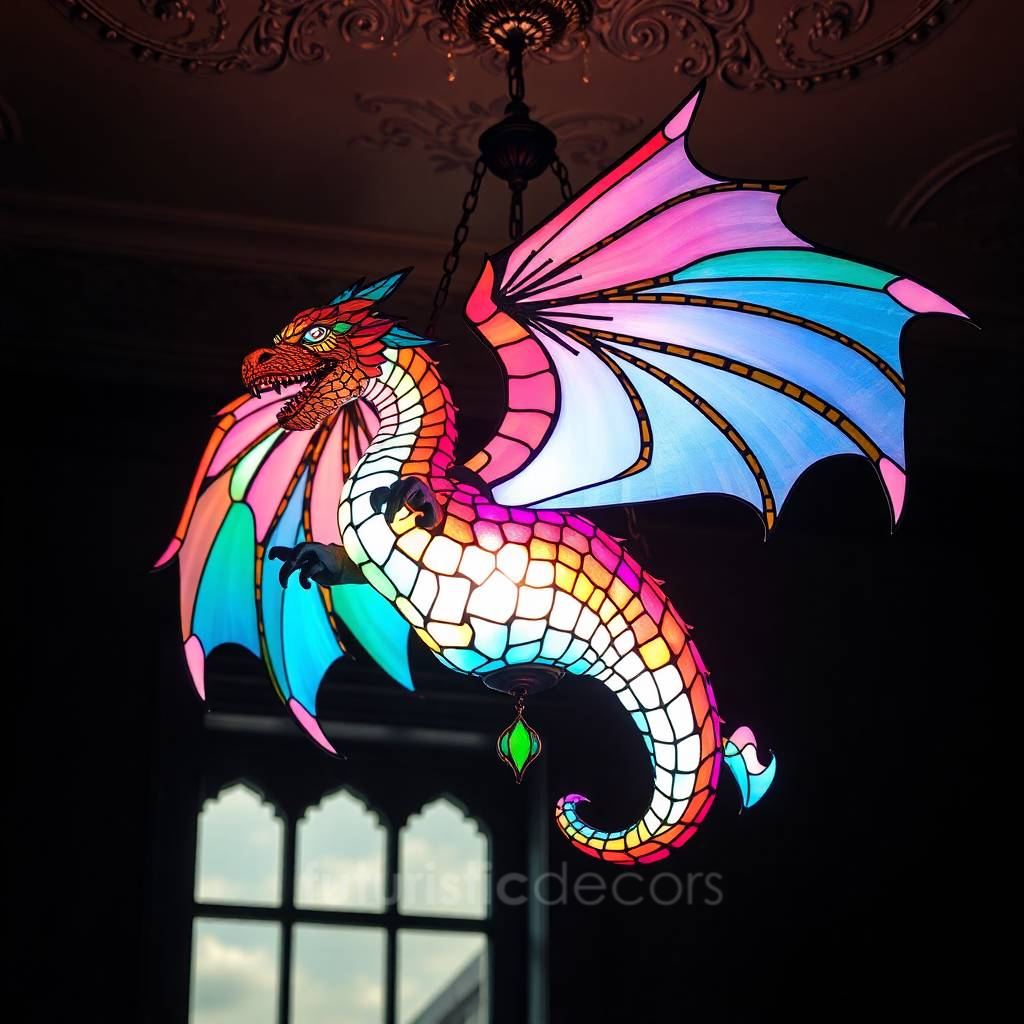
The Industrial Revolution saw glassmaking shift toward mechanization, but led artists like Louis Comfort Tiffany to revive and reinvent the craft. Tiffany’s favrile glass, with its iridescent surface and layered hues, inspired modern makers to push the boundaries of color and form. The Art Nouveau movement embraced organic, flowing lines—perfect for translating the curves of dragon bodies into window panels and lampshades.
In the late 20th and early 21st centuries, technological advances such as kiln-forming, fused glass, and computerized cutting allow for unprecedented precision and complexity. These innovations make it possible to cut hundreds of irregular glass pieces—each carefully chosen for color gradient—and assemble them into life-sized dragon sculptures. When wired for illumination, they become chandeliers that glow from within, shifting color as the viewing angle changes.
3. Design Elements of Rainbow Stained Glass Dragon Chandeliers
3.1 Silhouette and Scale
A well-designed dragon chandelier balances scale and silhouette. Too small, and the dragon motif reads as a novelty; too large, and it overwhelms the room. Designers often opt for spans between 3 to 6 feet, allowing the dragon’s wingspan to command attention without dominating the entire ceiling. The silhouette should capture classic dragon features: a sinuous body, articulated tail, bat-like wings, and an expressive head with horns and a poised snout.
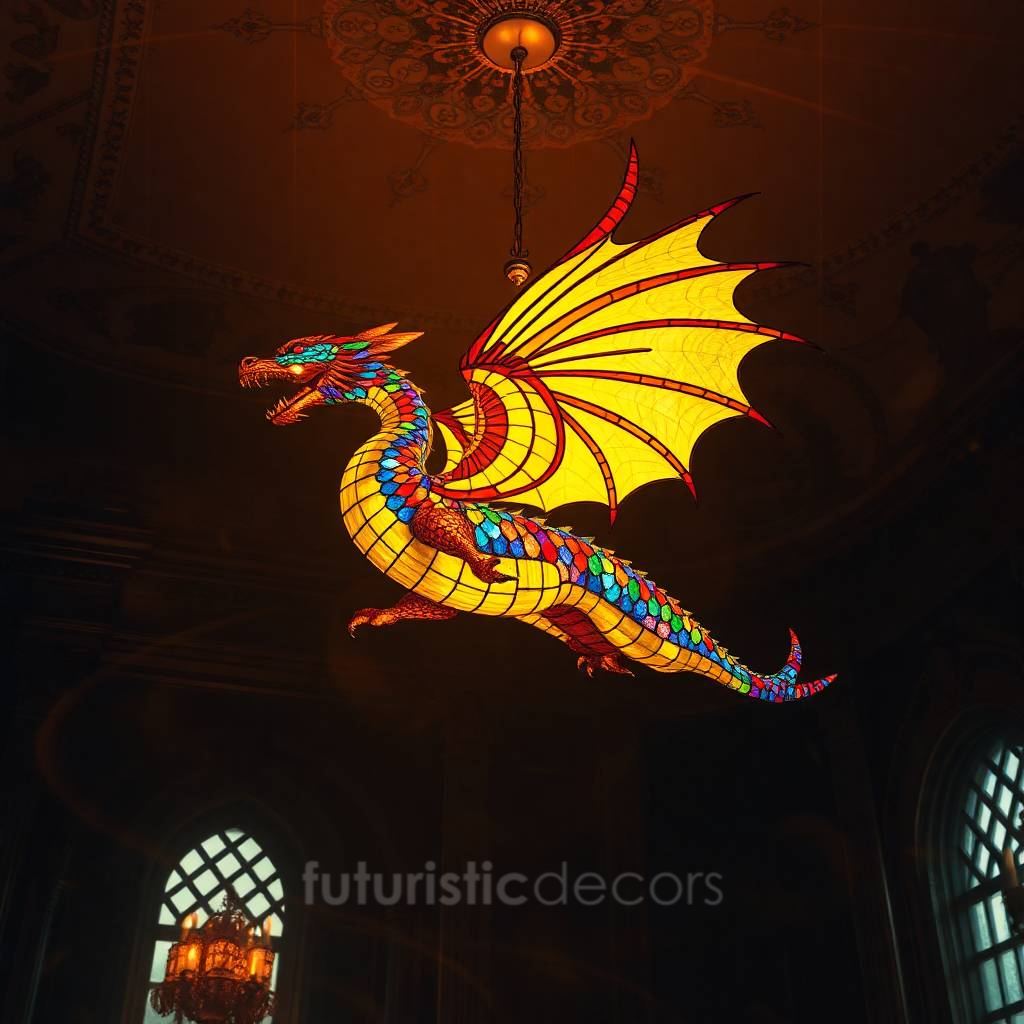
3.2 Color Transitions
Unlike single-color fixtures, Rainbow Stained Glass Dragon Chandeliers use a spectrum of hues—red, orange, yellow, green, blue, indigo, violet—transitioning seamlessly across wings and body segments. Skilled artisans select glass sheets with subtle shade variations, layering narrower strips for gradient effects. The head and chest might glow with fiery reds and ambers, while wings transition into cooler blues and purples, evoking a dragon perched amid sunrise or sunset skies.
3.3 Internal Lighting
The choice of illumination dramatically affects the final effect. LED arrays are preferred for their low heat output, color fidelity, and dimmability. Warm-white LEDs accentuate reds and ambers; cooler whites highlight greens and blues. Some advanced chandeliers even incorporate RGB LED controllers, enabling the owner to adjust hue intensities and dynamic light shows, casting rippling prismatic patterns across the room.

3.4 Frame and Support
Supporting hundreds of glass pieces requires a sturdy internal frame, usually steel or brass. The frame is shaped to follow the dragon’s anatomy, with arms extending into wing “bones” and spinal supports for the main body. Each glass segment is meticulously fitted into copper foil or lead channeling, soldered to secure the shape. The entire assembly is then powder-coated or patinated to complement the color scheme, often in antique bronze or blackened steel for a gothic flair.
4. Color Theory and Light Play: Rainbow Stained Glass Dragon Chandeliers
The magic of stained glass lies in its interaction with light. Rainbow Stained Glass Dragon Chandeliers harness additive and subtractive color principles to produce mesmerizing effects:
Additive Color Mixing: Overlapping translucent glass colors allows light to blend within the fixture. A yellow overlay against blue glass yields verdant greens within the dragon’s scale pattern.
Subtractive Color Filtering: As light passes through a colored medium, specific wavelengths are absorbed. This creates saturated hues that appear richer than painted surfaces.
Prismatic Dispersion: Faceted glass edges act like prisms, scattering small rainbows onto walls and floors. This effect intensifies when chandeliers feature bevelled or polished-edge glass.
Designers often simulate lighting effects using digital renderings before fabrication, ensuring that color transitions appear harmonious from multiple viewing angles. In darker rooms, a single lit dragon chandelier can become a dynamic light sculpture—constantly shifting in intensity as daylight fades and interior lights adjust.
5. Materials and Craftsmanship: Rainbow Stained Glass Dragon Chandeliers
5.1 Glass Selection
Premium chandeliers use mouth-blown or hand-rolled art glass for deeper color saturation and natural striations. Some makers incorporate dichroic glass—tiny metallic oxides laminated between glass layers—to achieve shifting color at different angles. Glass thickness varies from 2mm for delicate wing membranes to 6mm for structural segments like the head or torso.
5.2 Foiling and Leading Techniques
Two main methods secure the glass pieces:
Copper Foil (Tiffany Method): Ideal for curved, intricate segments like claws and horns; thin foil wraps around each glass piece before soldering.
Lead Caming: Thicker channels that create a bold, graphic outline—often used for wing edges and the dragon’s outline silhouette.
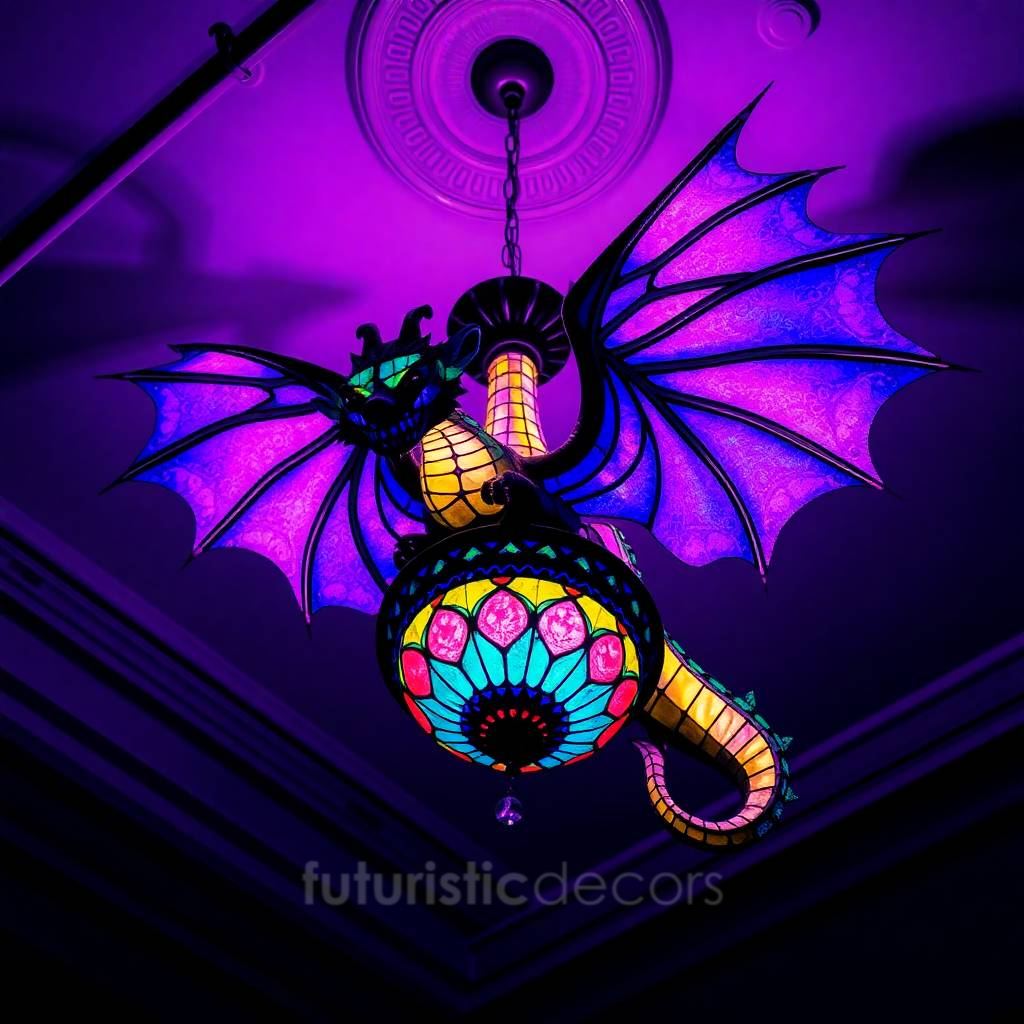
5.3 Soldering and Finishing
Experienced artisans solder joints with lead-free alloys, then patinate the metal seams to deepen contrast. The frame receives multiple protective coatings—zinc primer, epoxy resin, and optional UV inhibitors—to prevent corrosion and glass discoloration over time.
5.4 Safety and Electrical
All wiring adheres to international safety standards (UL, CE, or equivalent). Cables are hidden within the dragon’s spine and wings, with ventilation gaps to dissipate any residual heat. A central canopy houses transformers and dimmer controls, accessible via a discreet panel for maintenance.
Links to purchase similar products: Click here
6. The Creation Process: From Sketch to Suspension
6.1 Conceptual Sketches
Every chandelier begins as hand-drawn or digital sketches, illustrating scale, posture, and color layout. These drawings guide material estimates and structural calculations.
6.2 Mock-Up and Prototyping
Artisans often build a small-scale maquette (10–20% of full size) in acrylic or low-cost glass to test structural integrity and light dispersion. This step helps refine wing curvature and determine LED placement for even glow.
6.3 Full-Scale Fabrication
- Glass Cutting: Using water-jet or hand tools, each piece is shaped per pattern templates.
- Grinding and Smoothing: Edges are ground to precise shapes and to ensure proper foil/lead adhesion.
- Foiling/Leading and Soldering: Sections are assembled in layers, starting from central body pieces, moving outward to wings and tail.
- Frame Assembly: The steel/brass skeleton is welded or bolted, then integrated with glass panels.
- Wiring: LED modules are installed, tested, and secured.
- Finishing Touches: Patina, clear coats, and any crystal accents or metal filigree are added.
6.4 Installation
Given their weight (often 50–150 pounds), professional installation with reinforced ceiling supports is essential. The chandelier is typically hung from a steel cable or chain anchored to a braced ceiling joist, with a level adjustment to ensure perfect horizontal orientation.
7. Placement and Styling Tips: Rainbow Stained Glass Dragon Chandeliers
- Foyers and Entryways: Suspend the chandelier so the dragon appears mid-flight above guests, with the head slightly forward to draw the eye inward.
- Dining Rooms: Center above the table; choose a low-arc posture so wings follow the table’s length, creating an intimate atmospheric glow.
- Libraries and Studies: Position over seating areas; integrate with wooden or leather interiors for a moody, scholarly vibe.
- Great Rooms and Ballrooms: Multiple smaller dragon chandeliers can flank a central larger piece, creating a constellation of mythical creatures.
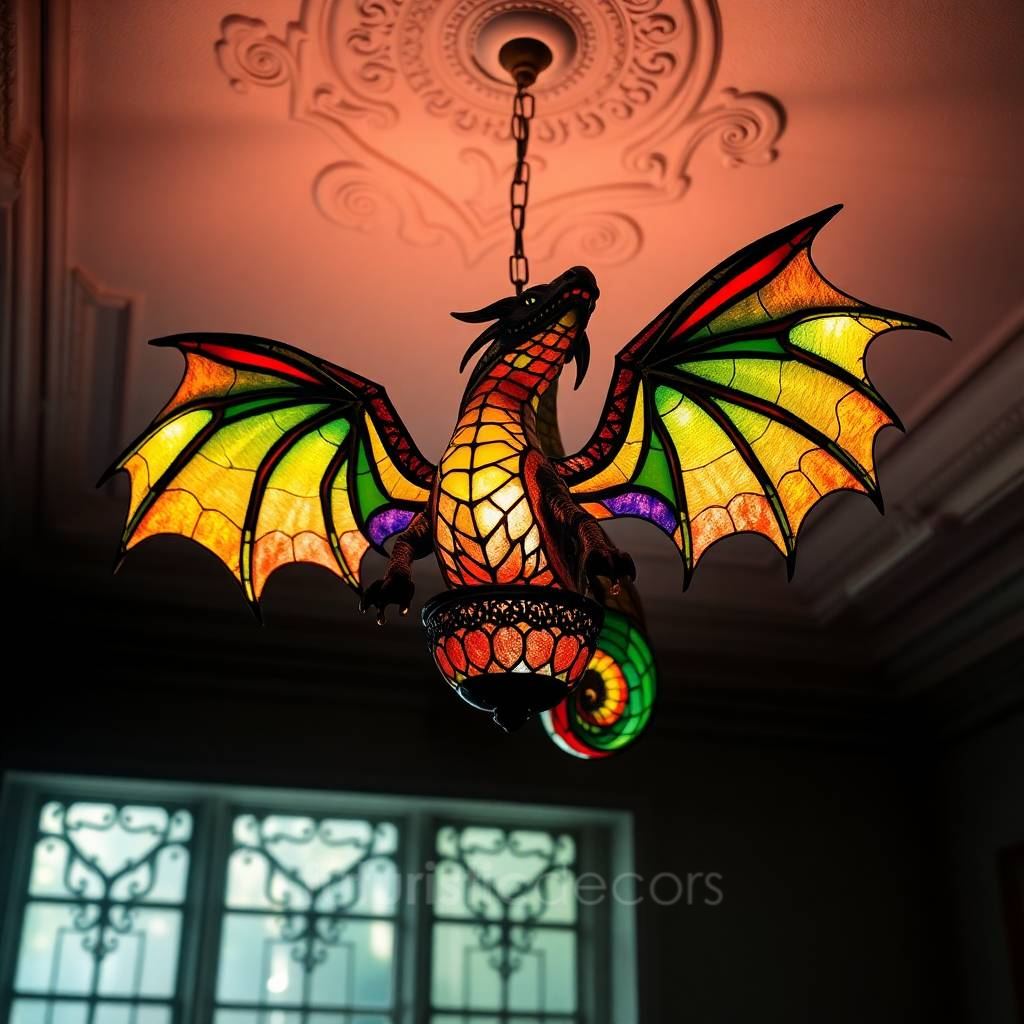
Pair with reflective surfaces—marble floors, mirrored panels, or polished wood—to amplify prismatic effects. Accent décor with complementary dragon motifs: sculpted bookends, embossed throw pillows, or dragon-scale patterned rugs.
8. Maintenance and Care
To preserve brilliance and structural integrity:
Regular Dusting: Soft microfiber cloths or feather dusters; avoid abrasive materials.
Deep Cleaning: Annually, gently remove the chandelier (if feasible) or use a ladder and low-ammonia glass cleaner sprayed onto cloths—never directly onto glass.
Inspect Wiring: Check LED modules and connections for signs of wear or corrosion; replace any flickering diodes promptly.
Structural Check: Verify ceiling anchors and frame welds twice a year, especially in humid or earthquake-prone regions.
Developers of modern dragon chandeliers often offer maintenance services, including re-patination and glass restoration, ensuring the piece retains its mythical allure for decades.
9. Customization and Commissioning Your Own Chandelier
While pre-designed models abound, commissioning a custom Rainbow Stained Glass Dragon Chandelier allows you to tailor every detail:
- Pose and Posture: A dragon can coil, swoop, or perch, each posture conveying a different narrative energy.
- Scale and Proportion: Specify dimensions to suit rooms from cozy dens to grand halls.
- Color Palette: Emphasize specific hues to match interior schemes or seasonal décor themes.
- Material Accents: Integrate Swarovski crystals for sparkle, or embed metallic leaf for reflective highlights.
- Interactive Controls: RGBW LEDs with smartphone apps can sync light shows to music or circadian rhythms.
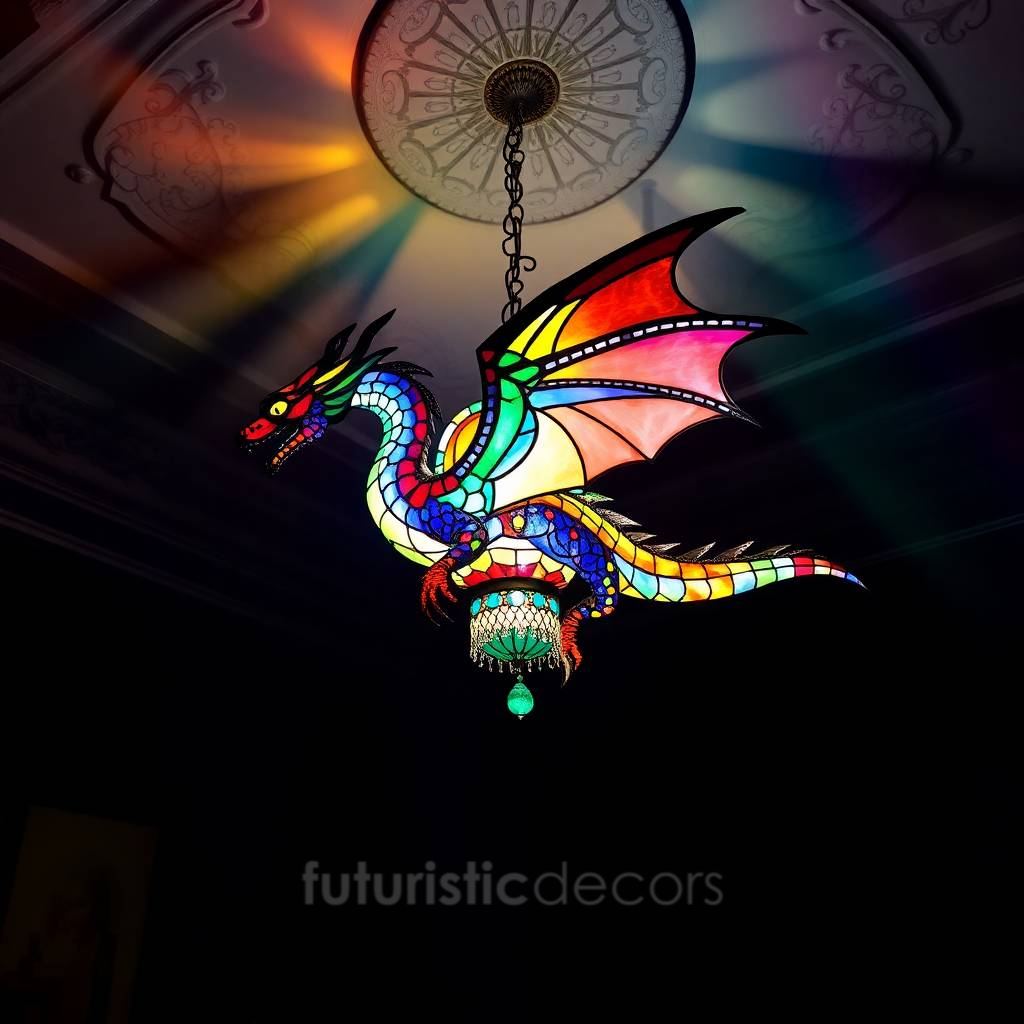
Begin by selecting a reputable artisan studio with a portfolio of stained glass sculptures. Expect a lead time of 8–16 weeks for full-custom projects, depending on complexity.
10. Sustainability and Eco-Friendly Practices
Contemporary makers are increasingly mindful of environmental impact:
- Recycled Art Glass: Utilizing post-consumer glass prevents raw-material waste.
- Lead-Free Solder: Many workshops have shifted to tin-silver alloys certified for low toxicity.
- Energy-Efficient LEDs: Modern fixtures draw minimal power—often under 100W total—even at large scales.
- Local Craftsmanship: Commissioning from nearby studios reduces shipping carbon costs and supports artisan communities.
By prioritizing sustainable materials and practices, your rainbow dragon chandelier becomes not only a symbol of myth and magic but also of responsible artistry.
11. Case Studies & Showcase Examples
The Aurelia Estate, Tuscany
A six-foot dragon with rose-toned wings installed above a grand marble staircase. Warm-white LEDs highlight amber and gold scales, casting a sunset glow through arched windows.
Urban Loft in Seattle
A sleek, chromatic dragon coils above a minimalist dining island. Dichroic glass panels shift from emerald to sapphire under programmable RGB lights, reflecting the city skyline at night.
Victorian Reading Nook, London
A petite three-foot chandelier perches in a bay window, suspended by antique brass chain. Stained glass features mossy greens and dusk purples, complementing leather armchairs and oak bookcases.
Each installation demonstrates how Rainbow Stained Glass Dragon Chandeliers adapt to diverse environments—whether rustic, modern, or historic—while uniting art and illumination in one spellbinding form.
Conclusion: Rainbow Stained Glass Dragon Chandeliers
A Rainbow Stained Glass Dragon Chandelier is more than home décor; it’s a narrative brought to life through color, light, and masterful craftsmanship. From the ancient symbolism of dragons to the centuries-old traditions of stained glass, these fixtures encapsulate artistry at its most enchanting. Whether you seek a show-stopping centerpiece for a formal dining hall or a whimsical focal point in a personal library, a dragon chandelier will transform your space into a sanctuary of mythical elegance. Embrace the legend—let your home shine with the art of mythical illumination.
Rainbow Stained Glass Dragon Chandeliers are far more than mere lighting fixtures—they are sculptural narratives that bring myth and color into any environment. By uniting centuries-old stained glass traditions with the timeless symbolism of the dragon, these chandeliers create a dynamic interplay of light, shadow, and hue that transforms ordinary spaces into realms of wonder. From the delicate gradations of mouth-blown glass to the precision of modern LED technology, each element is crafted to evoke movement, drama, and emotional resonance.
Whether perched above a grand staircase, suspended in a vaulted cathedral ceiling, or accenting a cozy reading nook, a rainbow dragon chandelier becomes the centerpiece around which an entire décor scheme revolves. Its prismatic glow casts shifting patterns of color, while its intricate silhouette tells a story of craftsmanship and imagination. When you commission or select a piece, you’re not just choosing a light source—you’re inviting an artwork that celebrates artistry, sustainability, and the power of fantasy.
Embrace the magic of mythical illumination and let a Rainbow Stained Glass Dragon Chandelier breathe vibrant life into your home. In doing so, you honor both the heritage of stained glass artistry and the enduring legend of the dragon—creating a space that’s as functional as it is fantastical.


